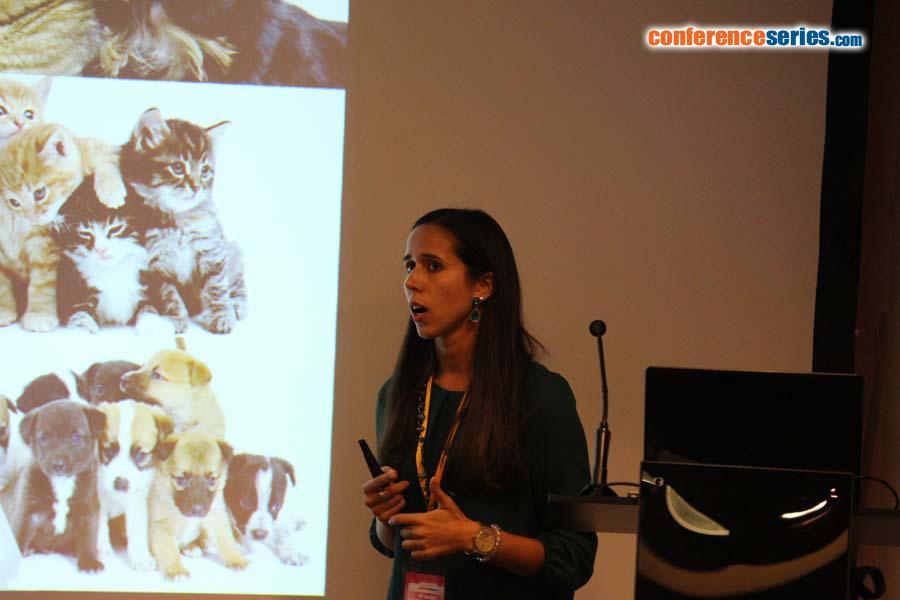
Inês Machado
University of Lisbon, Portugal
Title: Frequency of infectious diseases in domestic carnivores hospitalized in the Isolation Unit of the teaching hospital of Veterinary Medicine Faculty, University of Lisbon
Biography
Biography: Inês Machado
Abstract
The veterinary teaching hospital (VTH) of the Faculty of Veterinary Medicine, University of Lisbon runs an Infectious Diseases Isolation Unit (IDIU) since October 2013 for the admission of animals with confirmed infectious disease or clinically suspected and awaiting diagnosis. This study identifies the main infectious diseases recorded at IDIU and aims to improve the design of dogs and cats infectious diseases vaccination programs. The hospitalized population in the first 28 months of activity of the IDIU was characterized, as well as the routine operations of IDIU and VTH contributing for the early isolation of suspected animals. During the study period, 229 animals were admitted, 113 (49.3%) cats and 116 (50.7%) dogs. Gender, neutering status, age, breed, origin, lifestyle, geographic distribution, history of vaccination, referenced cases, hospitalization period, clinical outcome and follow-up were recorded on the VTH information system. Most frequent cat infectious diseases were Feline leukemia virus (26.5%), Feline immunodeficiency virus (18.6%) and Feline panleukopenia (14.2%), followed by Feline peritonitis virus (8.8%) and Feline upper respiratory tract disease (6.2%). In dogs the main reason for confinement was gastroenteritis (55.2%), namely caused by canine parvovirus (24.1%), followed by leptospirosis (9.5%) and more recently canine distemper (6.0%). The outcome was also recorded, with the following results: 78 (69.0%) of the cats recovered after therapy and were discharged, 23 (20.4%) were euthanized due to severity of symptoms, and 12 (10.6%) died. In dogs, 81 (69.8%) recovered after therapy and were discharge, 20 (17.2%) died and 15 (12.9%) had to be euthanized due to severity of symptoms. Risk factors for the occurrence of infectious diseases were identified for this population, namely the absence of vaccination for feline panleukopenia and canine Parvovirosis (p<0.05).




